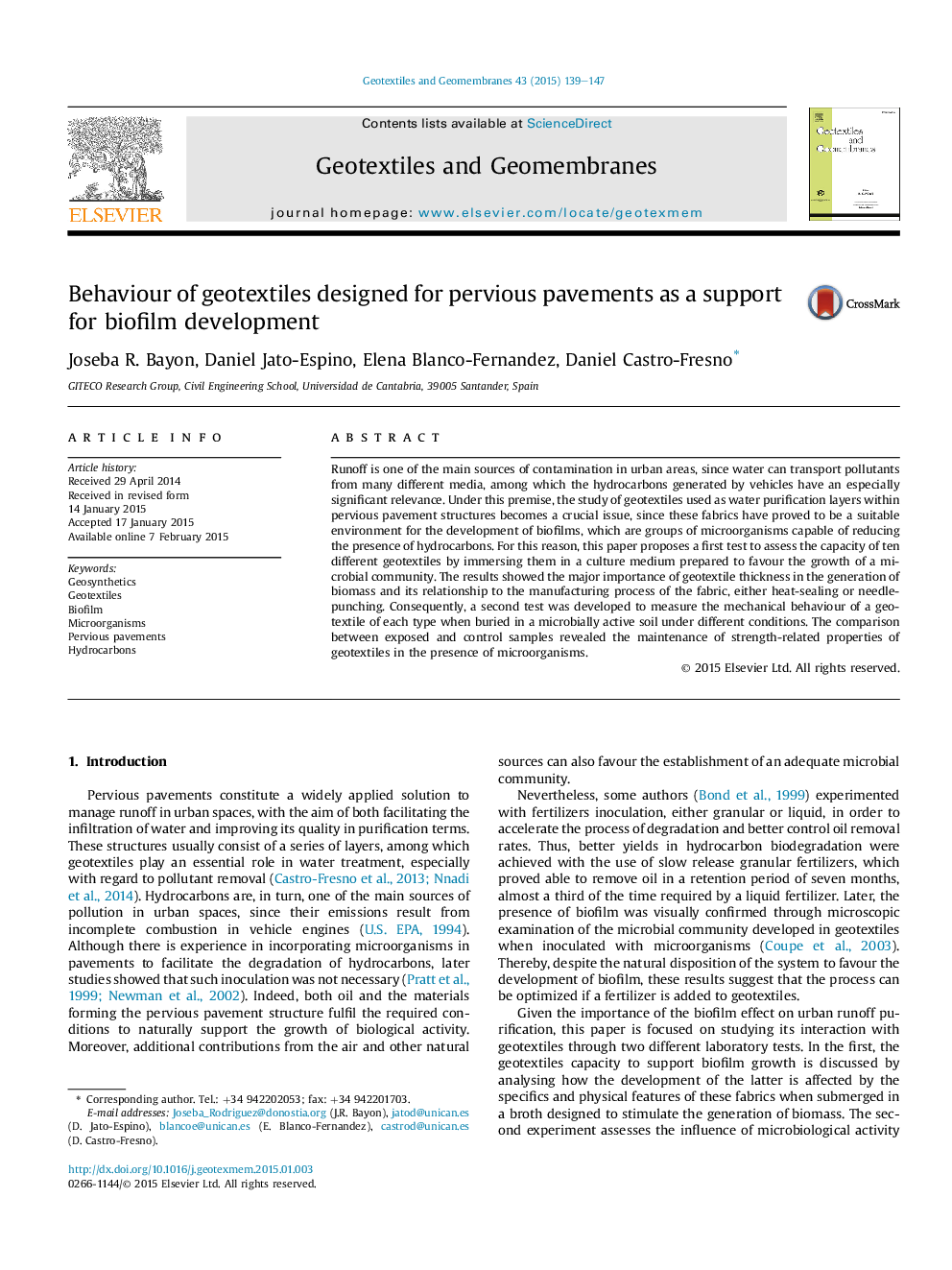| Article ID | Journal | Published Year | Pages | File Type |
|---|---|---|---|---|
| 274051 | Geotextiles and Geomembranes | 2015 | 9 Pages |
Runoff is one of the main sources of contamination in urban areas, since water can transport pollutants from many different media, among which the hydrocarbons generated by vehicles have an especially significant relevance. Under this premise, the study of geotextiles used as water purification layers within pervious pavement structures becomes a crucial issue, since these fabrics have proved to be a suitable environment for the development of biofilms, which are groups of microorganisms capable of reducing the presence of hydrocarbons. For this reason, this paper proposes a first test to assess the capacity of ten different geotextiles by immersing them in a culture medium prepared to favour the growth of a microbial community. The results showed the major importance of geotextile thickness in the generation of biomass and its relationship to the manufacturing process of the fabric, either heat-sealing or needle-punching. Consequently, a second test was developed to measure the mechanical behaviour of a geotextile of each type when buried in a microbially active soil under different conditions. The comparison between exposed and control samples revealed the maintenance of strength-related properties of geotextiles in the presence of microorganisms.
